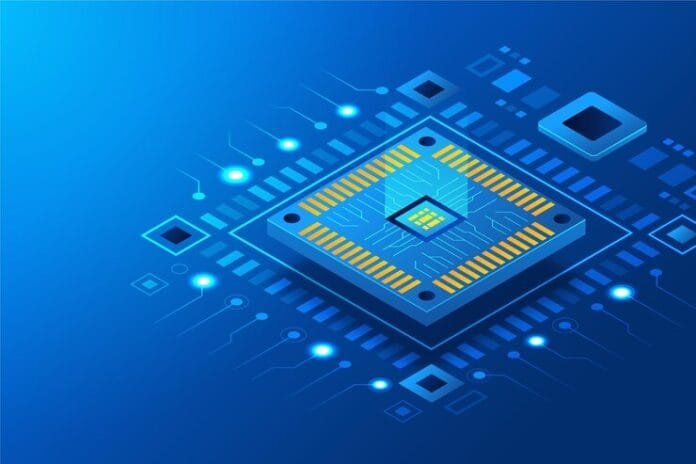Here’s an attempt at crafting a compelling Overview section:
The world is awash in silicon, a silent, pervasive revolution fueled by the Integrated Circuit (IC). We’re not talking about incremental improvements here, but a fundamental shift in how we build, interact with, and even conceive of technology. For too long, the industry has accepted incremental advances as breakthroughs, yet the truth is the current IC landscape is ripe for disruption, and the implications are staggering. The pace of miniaturization isn’t just slowing; it’s hitting a wall, forcing us to confront the limitations of Moore’s Law. This isn’t hyperbole; it’s the stark reality of the exponential curve flattening out. We stand at a precipice, where the established paradigms of chip design and manufacturing are being challenged by innovative techniques and material science breakthroughs that offer potentially limitless possibilities.
This isn’t just an engineering problem; it’s a strategic imperative. For electronics manufacturing leaders, clinging to outdated manufacturing processes and neglecting emerging technologies is tantamount to obsolescence. Failure to adapt will not only result in being left behind but also see entire market shares eroded by those brave enough to grasp the radical potential of new methodologies. We’re entering an era where smaller isn’t just about higher density; it’s about fundamentally reshaping the economics of computation and the capabilities of everything from AI to IoT. Some may argue that the current approach is sustainable; that incremental tweaks are enough. This is a dangerous fallacy. The IC revolution is not an option; it’s an inevitability. This post will dissect the challenges and, more importantly, illuminate the path forward, offering a critical perspective on how the new wave of innovative IC’s will reshape electronics forever. We will delve into cutting-edge material sciences, fabrication techniques, and architectural shifts, showcasing the opportunities and outlining why this isn’t just a technological evolution, it’s a new dawn for the entire industry. The question isn’t if the revolution will occur; it’s if you will be leading it.
The integrated circuits (IC) market is not simply evolving; it’s being reshaped by powerful, often conflicting forces that demand strategic agility and a ruthless commitment to innovation. This analysis dissects these tectonic shifts, offering actionable insights for survival and triumph in this fiercely competitive arena. We’re not talking incremental adjustments; we’re talking fundamental rewrites of the rules.
Thesis Statement: The IC market is experiencing a dramatic transformation driven by a confluence of positive trends like AI-driven demand and technological advancement, juxtaposed against adverse pressures such as geopolitical instability and escalating costs. Success hinges on actively leveraging the former while aggressively mitigating the latter.

Positive Trends:
- AI and Machine Learning Explosion: The voracious appetite of AI applications, from cloud computing to autonomous vehicles, for high-performance computing is driving unprecedented demand for advanced ICs, particularly GPUs and specialized AI accelerators. NVIDIA’s dominance in this space is a testament to this trend. This isn’t a fleeting fad; it’s the foundation of the next technological revolution.
- Impact: Significant revenue growth for companies capable of designing and producing these specialized chips.
- Actionable Insight: Invest heavily in R&D focused on AI-specific chip architectures. Forge partnerships with AI software companies to tailor chips to evolving algorithmic needs.
- Rise of Edge Computing: The need for low latency and data privacy is pushing processing closer to the source, fuelling demand for powerful, energy-efficient edge computing ICs. This trend is not about replacing the cloud but complementing it, creating a new layer of infrastructure.
- Impact: Opportunities for companies specializing in low-power, high-performance processors tailored for edge devices.
- Actionable Insight: Explore development of ultra-low power architectures and edge-optimized functionalities. Target specific application verticals like industrial automation and smart city infrastructure.
- Technological Advancement in Packaging & Materials: The relentless pursuit of miniaturization and performance is driving innovation in advanced packaging technologies (e.g., chiplets, 3D stacking) and new semiconductor materials (e.g., Gallium Nitride, Silicon Carbide). This unlocks more dense, faster, and more energy-efficient designs.
- Impact: Allows higher density chips with less waste.
- Actionable Insight: Collaborate with material science firms and packaging foundries to develop cutting-edge solutions.
Adverse Trends:
- Geopolitical Instability & Supply Chain Vulnerabilities: The ongoing trade war between major global powers, coupled with disruptions like pandemics, have exposed the fragility of the semiconductor supply chain. This is not simply bad luck; it’s a systemic weakness that demands proactive management.
- Impact: Increased lead times, production delays, and pricing volatility.
- Actionable Insight: Diversify manufacturing locations and build redundant supply chains. Develop local supply networks and look for alternative materials and suppliers.
- Escalating Costs: The rising complexity of chip design and manufacturing is driving up production costs exponentially, requiring massive capital investments in R&D and fabrication facilities. These costs threaten to price out smaller players and hinder innovation.
- Impact: Difficulty in maintaining profitability and competitiveness for many companies.
- Actionable Insight: Optimize design processes, leverage automation to reduce labor costs and explore collaborative development models to share investment burdens.
- Increased Competition & commoditization: The growing number of players entering the IC design space and the rise of open-source design tools can lead to a level of commoditization in certain chip segments. This is not just about pricing, but also differentiation in the market.
- Impact: Reduced profit margins and pricing pressure.
- Actionable Insight: Focus on developing proprietary technologies, explore niche markets that require highly specific chip functionality and invest in creating unique value propositions for customers.
Conclusion:
The IC market is a crucible of innovation and disruption. Companies that proactively embrace positive trends, aggressively mitigate adverse ones, and are willing to challenge conventional wisdom will not merely survive, they will dominate. This isn’t a passive observation; it’s a call to arms for strategists willing to play the game with audacity and foresight.
Integrated circuits (ICs) are not just components; they are the very engines driving modern business, their application reshaping entire industries. In Healthcare, for example, sophisticated diagnostic equipment like MRI and CT scanners are critically dependent on high-performance ICs. These chips handle complex data processing, enabling faster, more accurate scans – a direct benefit for patient care and a significant market differentiator for medical device manufacturers. Moreover, implantable devices like pacemakers and insulin pumps, utilizing ultra-low power ICs, are literally life-saving technologies; this dependence creates a high-stakes arena where reliability is paramount and innovation a non-negotiable.
The Automotive industry is undergoing radical transformation thanks to ICs. Advanced driver-assistance systems (ADAS), a key element in self-driving cars, rely heavily on high-speed processing chips for real-time sensor data analysis. Engine control units (ECUs), another vital application, use ICs to optimize fuel efficiency and emissions. The automotive IC market is a battleground, forcing manufacturers to prioritize not just performance, but also ruggedness and extended operational lifespans to withstand harsh conditions.
In Manufacturing, ICs enable automation through robotics and programmable logic controllers (PLCs). These chips control assembly lines with precision, optimizing production speed and reducing errors. Beyond control, sensor-based systems, powered by ICs, monitor equipment performance, predictive maintenance, and reducing downtime. This shift towards smart factories demonstrates that ICs are driving efficiency and competitiveness and any manufacturer not embracing these tools risks losing ground.
Finally, the Technology sector, perhaps the most obvious example, sees ICs at the very core of their products. Smartphones, laptops, and servers are completely dependent on cutting-edge ICs for processing power, memory, and connectivity. The intense competition in the tech market means manufacturers must constantly push the boundaries of IC innovation to gain an edge, making this sector not only the biggest consumer but also a major driver of IC advancement. A chip manufacturer that can deliver the latest and the most performant IC solutions can command a premium and win market share.
Thesis Statement: Integrated circuit companies are employing a mix of organic and inorganic strategies, post-2023, to navigate increasing demand, geopolitical shifts, and technological advancements, focusing on capacity expansion, strategic partnerships, and targeted acquisitions.
Organic Strategies:
Capacity expansion through significant capital investments in new fabrication facilities (fabs) is a core organic strategy. For instance, TSMC has continuously allocated billions to build cutting-edge fabs in Taiwan and abroad, reflecting their commitment to meet the growing demand for advanced nodes. This move ensures they maintain market leadership and control over production volumes, directly countering long lead times and supply chain bottlenecks experienced globally. Such investments are often accompanied by focused internal R&D to refine process technologies, improve yields, and introduce new materials to stay ahead of competitors, which shows strategic allocation of resources to enhance organic growth.
Inorganic Strategies:
Strategic alliances and targeted acquisitions form the backbone of inorganic growth. For example, GlobalFoundries entered into a technology partnership with Qualcomm in 2023 to expand its capacity for mobile chips. By collaborating instead of competing, GlobalFoundries gains access to crucial market segments, benefiting from the established market of Qualcomm. Furthermore, companies have also acquired small innovative design houses to gain access to specific intellectual property. Acquisitions, like that of specialty memory providers by bigger players, help integrate new technologies and secure specific component access for diversified product portfolios, a strategy that reduces dependency on external suppliers for critical components.
Addressing Counterarguments:
While these strategies are beneficial, they also come with challenges. Massive capital investments in fabs can be risky if market demand slows down. Similarly, inorganic growth through acquisitions can lead to cultural clashes and integration hurdles. Nevertheless, companies often offset these risks with careful financial planning, thorough due diligence, and integration strategies to ensure long-term sustainability. Moreover, the push for diversification of manufacturing and supply chain locations, though costly, offers a more resilient production model, showing a consideration of the potential risks and mitigation plans.

Outlook & Summary: The Unstoppable Tide of Silicon
The IC revolution isn’t a fleeting trend; it’s the bedrock of our technological future, and its pace is only accelerating. Within the next 5 to 10 years, expect integrated circuits to not just be smaller and faster, but radically more integrated. We’re talking about true system-on-a-chip (SoC) dominance, where entire functional systems are etched onto single silicon wafers, blurring the lines between traditionally discrete components. This paradigm shift means that the entire electronic component manufacturing sector will bend to the will of the IC. Those clinging to legacy models of discrete component production will face a brutal reckoning. The future isn’t in assembling countless individual parts; it’s in mastering the design and fabrication of these monolithic powerhouses.
This article has laid bare the core truth: integrated circuits are not just a part of the electronics landscape, they are the landscape. They dictate performance, cost, and innovation. The old guard of component manufacturing is being outpaced and outmaneuvered. The power lies in the tiny, complex architectures of the IC, and businesses who don’t aggressively invest in and champion this technology will become fossils. We are witnessing a tectonic shift in the electronics industry, and the question you need to ask yourself isn’t if this revolution is happening, but how you will seize its monumental opportunity – or be swept away?


